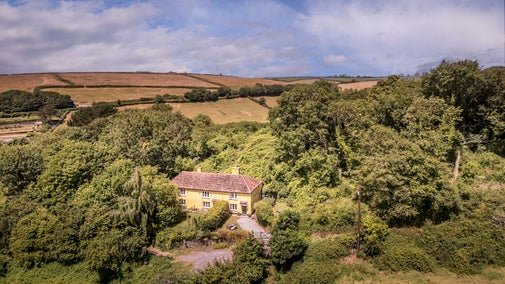
Become a member
Join today and help protect nature, beauty and history – for everyone, for ever. Enjoy access to more than 500 places with National Trust membership.
Rugged and captivating stretch of coast with secluded beaches
Devon

| Asset | Opening time |
|---|---|
| Countryside | Dawn - Dusk |
No designated Blue Badge parking. Brownstone car park has level ground. All-ability trail from Brownstone car park for 1 mile.
Dogs are welcome at Brownstone and Coleton Camp all year round, and there are plenty of places to take your four-legged friend while you’re here. Please help keep this area enjoyable for everyone by keeping your dog under close control, cleaning up after them and following the guidance below.

Stretch of coast east of the Dart Estuary. South West Coast Path runs along the cliffs and into coves.
Military road leading from Brownstone car park to Froward Point, one of the few remaining Second World War gun batteries.
Victorian cider press in the barn of a working farm. Great place for seeing cirl buntings, barn owls and bats.
Two secluded beaches, Man Sands and Scabbacombe, reached by walks through countryside and coastal paths. Dogs welcome.
Walk and explore quiet dog-friendly beaches with great coastal views. Spot a variety of wildlife, birdlife and flora that flourishes in the area.

Spectacular coastal views, historical features and wildlife spotting, as well as the option to extend your walk to a hidden cove and another National Trust place.

Including rugged coastline and a wetland area, this circular walk near Coleton Fishacre leads from Woodhuish Farm to Man Sands Beach and back via the South West Coast Path.

Coleton Fishacre Ranger Run takes in dramatic coastal scenery, some tough terrain and interesting built cultural history. This 9km trail run follows the edge of Coleton Fishacre estate along the South West Coast Path.


A recently refurbished former farmhouse, set within the grounds of Coleton Fishacre.

A white-washed cottage set within the grounds of Coleton Fishacre on the Kingswear Peninsula.

A getaway for two in the gardens of Coleton Fishacre on the South Devon coast.

A quiet Devon countryside stay with the gardens of Coleton Fishacre close by.
Sorry, there are no upcoming events at this place
This stretch of coast east of the Dart Estuary is complete with cliffs, beaches and traditional farmland. From Coleton Camp car park a moderate walk leads to the South West Coast Path, with access to Scabbacombe beach. Close to Brownstone car park, at Froward Point, is one of the few remaining Second World War gun batteries.
From battling bracken to restoring marshland habitat, our team of countryside rangers work constantly on the land around Brownstone and Coleton Camp. Find out more about our efforts.

Brownstone Battery is one of the country's few remaining WWII coastal defence positions, complete with gun and searchlight stations. Find out more about its military history.

Search for live volunteering opportunities, or register your interest with Brownstone and Coleton Camp


Join today and help protect nature, beauty and history – for everyone, for ever. Enjoy access to more than 500 places with National Trust membership.
By sharing your email address you’re agreeing to receive marketing emails from the National Trust and confirm you’re 18 years old or over. Please see our for more information on how we look after your personal data.